Rear Brake Caliper Overhaul JH6, JH7
Caution: Refer to Brake Dust Caution in the Preface section.
Caution: Refer to Brake Fluid Irritant Caution in the Preface section.
Disassembly Procedure
- Remove the brake caliper. Refer to
Rear Brake Caliper Replacement
.
- Drain all the brake fluid from the caliper.
Important: The brake calipers use phenolic pistons with stainless steel caps which contact the brake pads. Use compressed air to remove the piston from the brake caliper.
- Secure the brake caliper in a suitable holding device.
- Insert a piece of wood in the brake caliper between the pistons and the outer bridge.
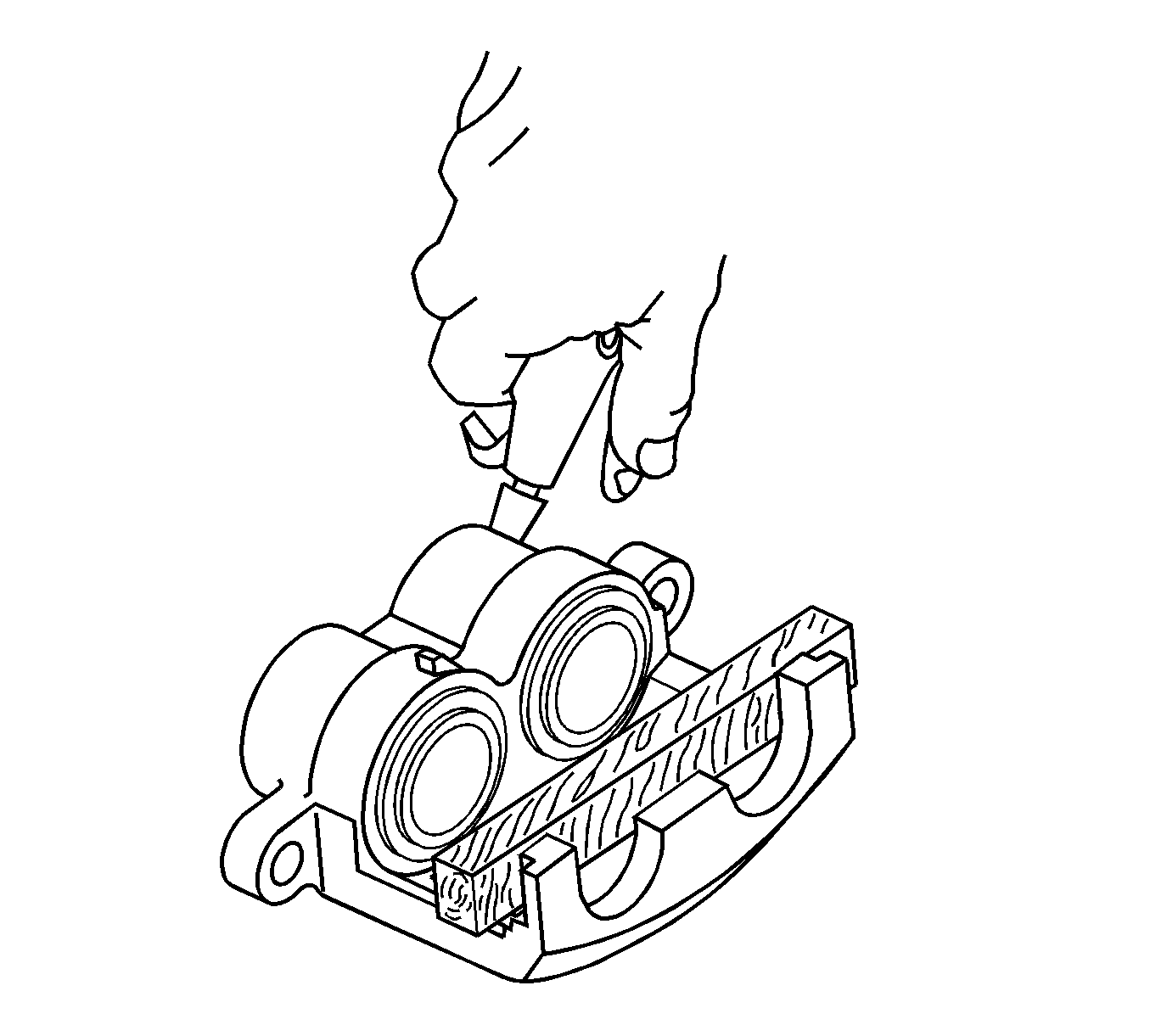
- Cover the brake caliper with a shop towel.
- Apply filtered, non-lubricated compressed air into the brake hose inlet fitting port of the brake caliper.
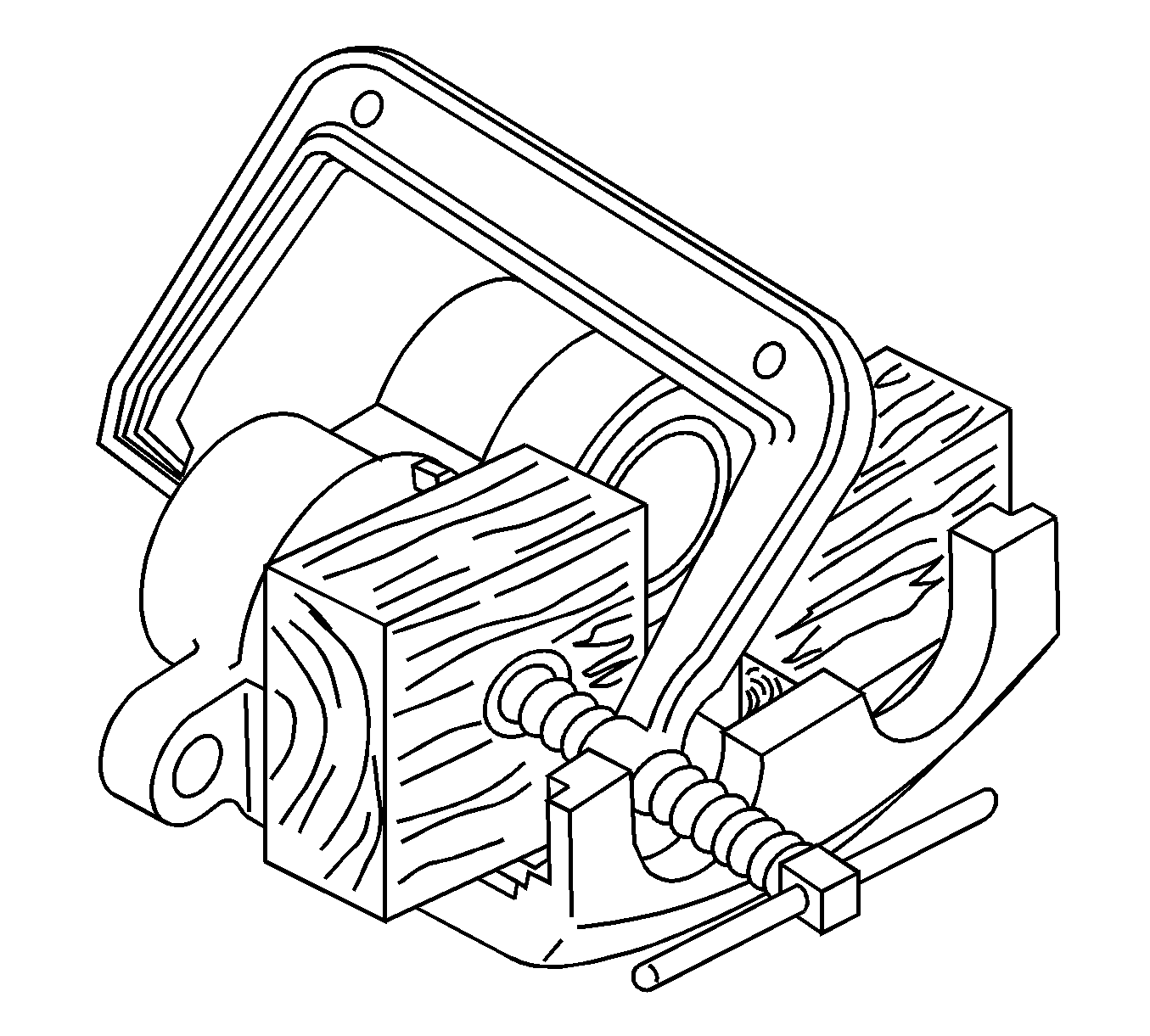
- If one of the pistons fails to be removed from the brake caliper, perform the following steps.
| 7.1. | Reposition the piston that has been removed back into the brake caliper. |
| 7.2. | Using a small block of wood and a C-clamp, slowly tighten the C-clamp until the piston is half way into the brake caliper. It does not have to be fully seated. |
| 7.3. | Position a second block of wood in front of the piston that remains in the brake caliper. |
| 7.4. | Cover the brake caliper with a shop towel. |
| 7.5. | Apply filtered, non-lubricated compressed air into the brake hose inlet fitting port of the brake caliper. |
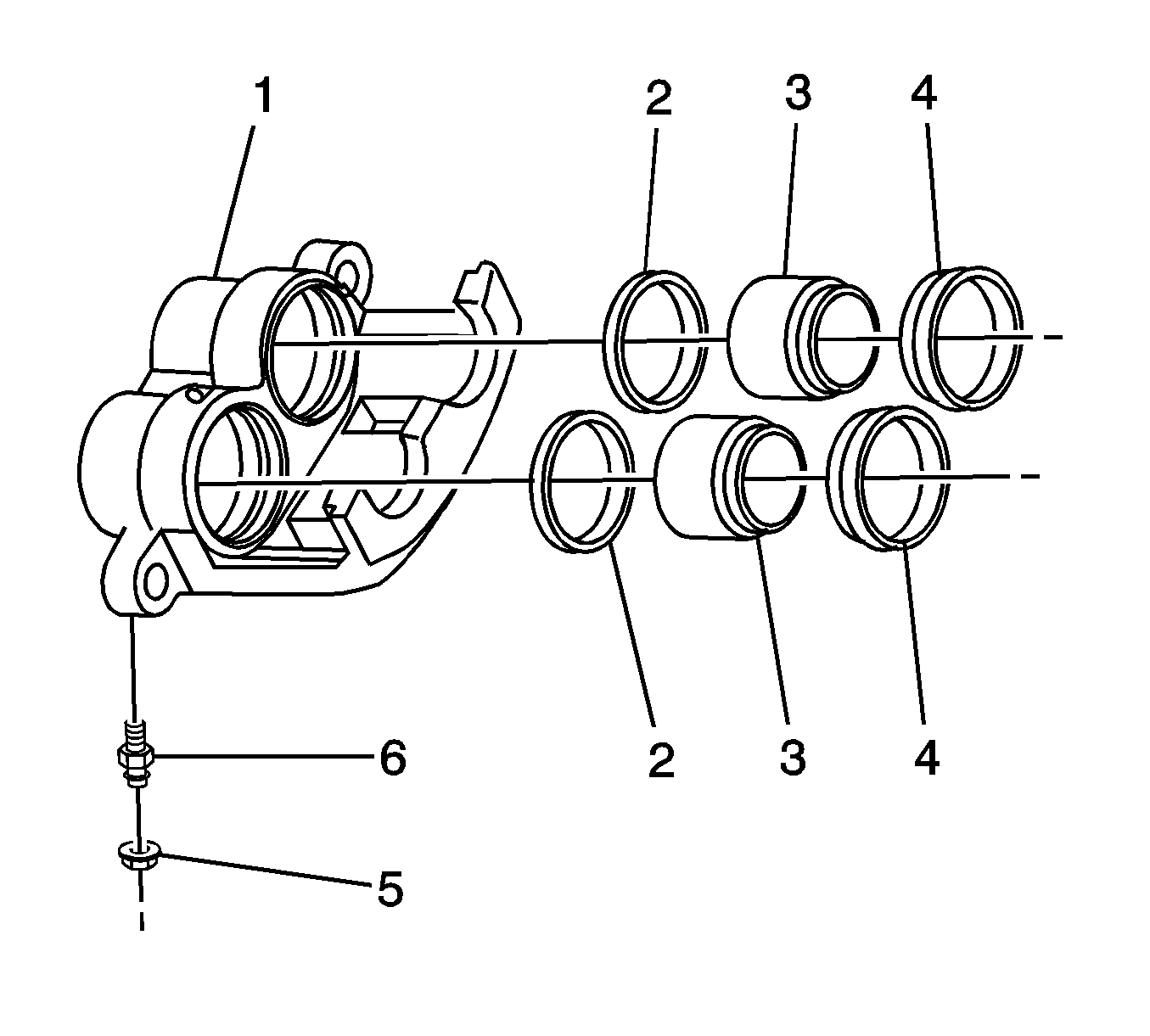
- Remove the pistons (3) from the caliper bores.
- Remove the boots (4) from the caliper bores. Do not scratch the caliper bores.
- Remove the piston seals (2) from the caliper bores. Do not use a metal tool.
- Remove the bleeder valve cap (5).
- Remove the bleeder valve (6) from the caliper housing (1).
- Clean the bleeder valve, the caliper bores, the caliper passages and the pistons with denatured alcohol. Dry the parts and blow out the brake fluid passages using filtered, non-lubricated compressed air.
- Replace the pistons or the caliper if any of the following conditions exist:
| • | Scoring in the caliper bores |
| • | Corrosion in the caliper bores |
| • | Pitting in the caliper bores |
| • | Damage to the pistons (phenolic) |
- Clean the brake caliper assembly with denatured alcohol.
- Dry with filtered , non-lubricated compressed air.
Assembly Procedure
Important: When applying the clean brake fluid to the piston bores, piston seals and pistons, only apply the brake fluid to one bore at a time. This is done to ensure the brake caliper, seals and pistons DO NOT become contaminated
with dirt or other foreign material.
- Apply a small amount of clean DOT-3 brake fluid to the piston, piston seal, and piston bore.
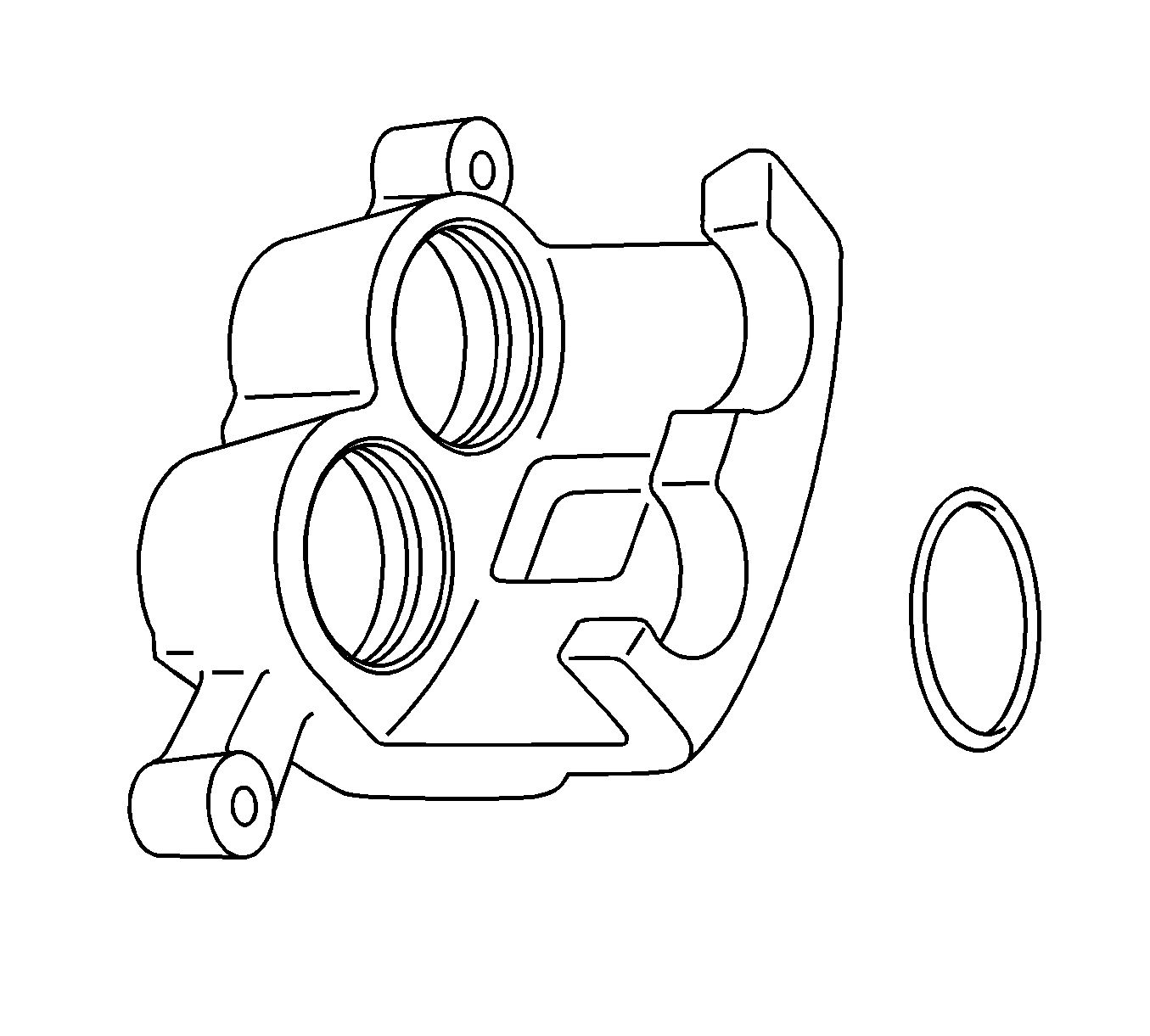
- Install the square-cut piston seal in the brake caliper bore groove.
- Ensure the square-cut piston seal is not twisted.
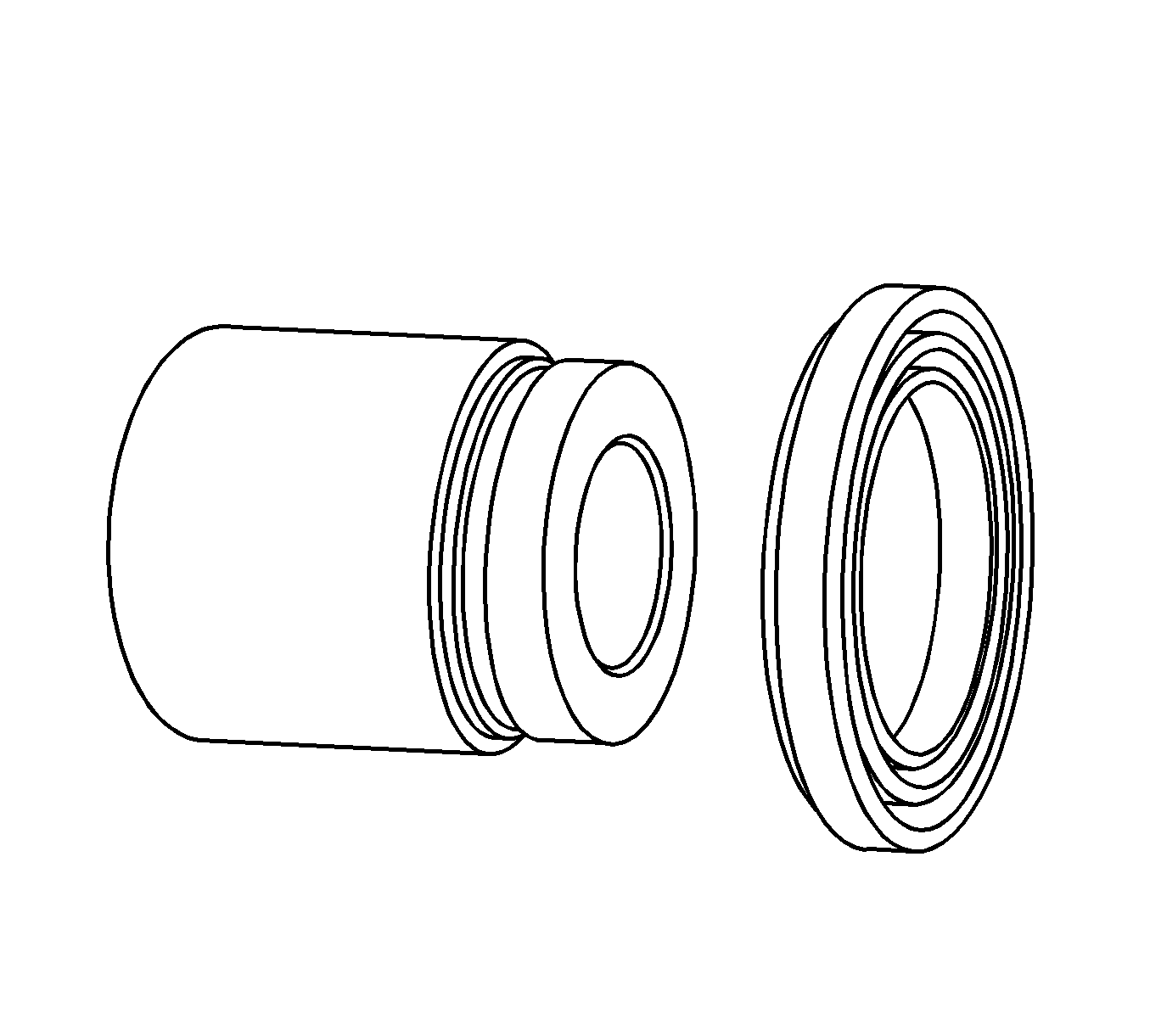
- Install the boot over the end of the piston so the fold will face toward the brake
caliper housing piston bore opening.
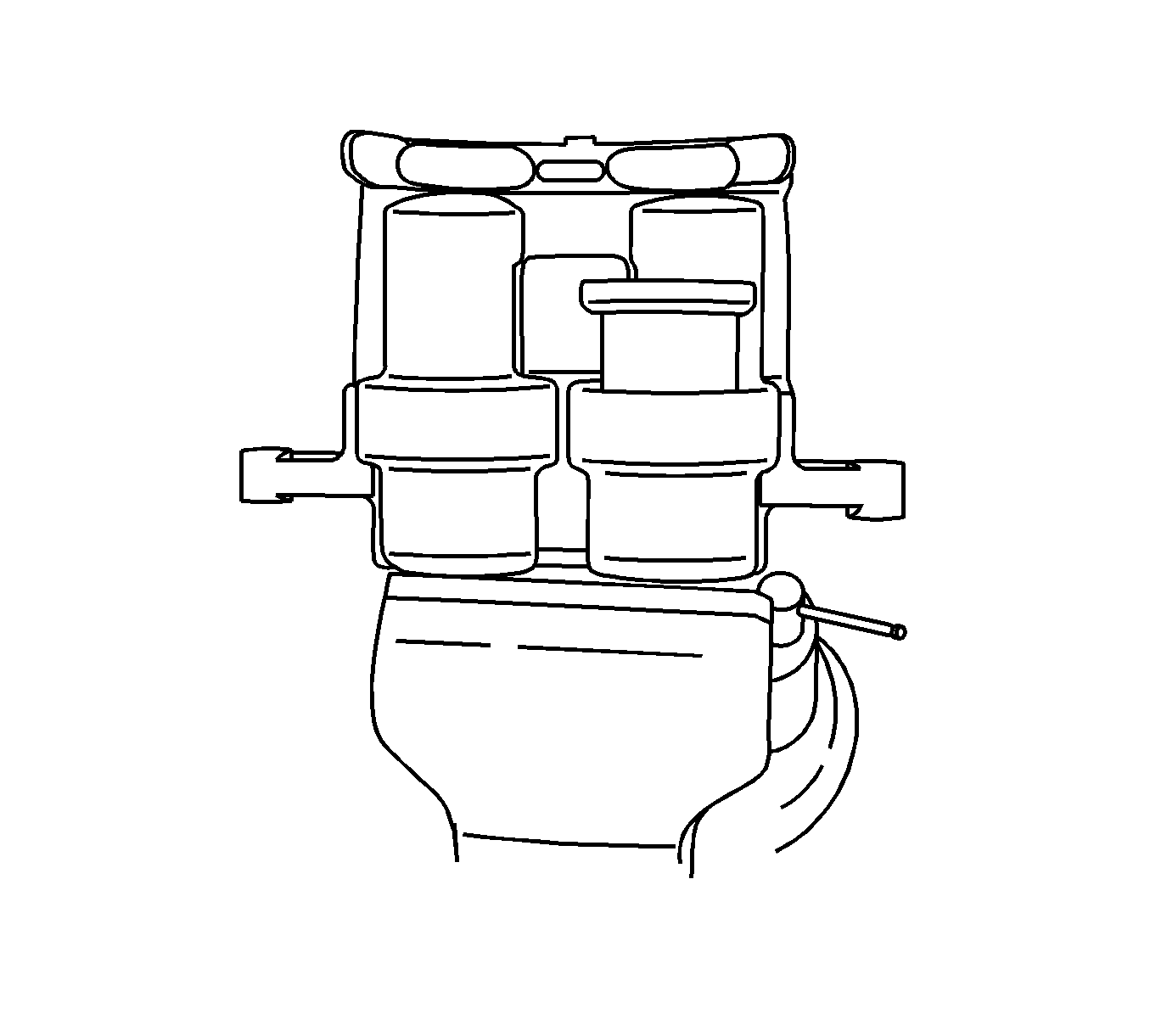
Important: Position the piston in the bore so that it is straight and level.
- Position the piston to the brake caliper bore and seat the boot into the brake caliper bore groove.

- Position a piece of wood across the piston to be installed.
- Applying equal pressure by hand while pushing down, install the piston in the bore.
- Remove the piece of wood.
Notice: Refer to Fastener Notice in the Preface section.
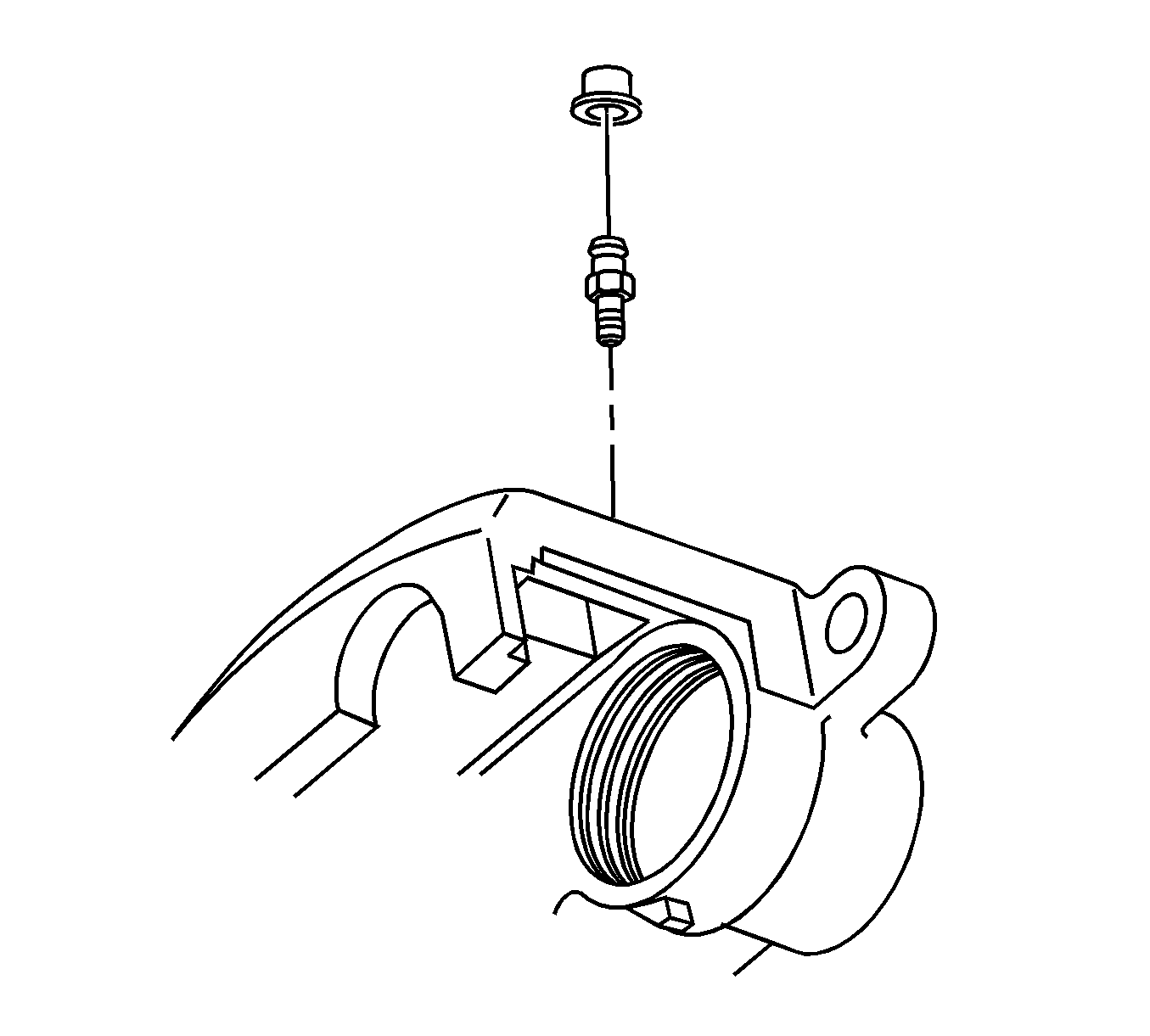
- Install the bleeder valve in the brake caliper housing.
Tighten
Tighten the bleeder valve to 12 N·m (106 lb in).
- Install the bleeder valve cap.
- Install the brake caliper. Refer to
Rear Brake Caliper Replacement
.








